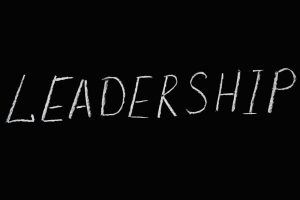
Would you like to navigate your career or business like a seasoned chess player, always thinking several moves ahead, anticipating challenges before they arise. This is the power of proactive thinking, a skill that can set you apart, reduce stress, and lead to better outcomes in both your professional and personal life. But how do you develop this ability in a world that often encourages us to simply react?
Why does Proactive Thinking Matter
In business, technology, or personal development, reactive thinking leaves you vulnerable. You only act when problems strike, causing unnecessary stress, missed opportunities, and lost momentum. For leaders, professionals, and entrepreneurs, this can be particularly dangerous. Not anticipating potential market shifts, competitor moves, or internal challenges can be the difference between growth and stagnation. Proactive thinking is more than just being prepared for what’s ahead. It’s about taking control of your circumstances rather than letting them control you. It’s about creating your own luck by anticipating and acting before situations escalate, rather than reacting to them once they do.
The good news? Proactive thinking is not an innate ability that only a few possess. It’s a skill you can cultivate with intentional practice. And once you master it, you can position yourself, your team, or your business for greater success.
Practical Steps to Develop Proactive Thinking
Here’s how you can start nurturing this essential skill today:
1. Cultivate Forward Thinking
Proactive thinking begins with the ability to look ahead and anticipate the future. Instead of focusing solely on the now, make it a habit to consider what’s coming next. Ask yourself questions like:
- What challenges or opportunities might arise next month or next quarter?
- What external factors, like market trends or customer demands, could impact my work or business?
Develop a habit of looking beyond immediate tasks and deadlines to see the broader picture.
2. Prioritise Planning Over Firefighting
Too often, people find themselves stuck in a cycle of solving urgent problems. To break this cycle, set aside dedicated time each week for strategic planning. Use this time to assess risks, forecast outcomes, and adjust your goals accordingly. By focusing on planning rather than firefighting, you’ll be better equipped to navigate unexpected hurdles without feeling overwhelmed.
3. Embrace ‘What-If’ Scenarios
Great leaders often play out “what-if” scenarios. What if a key supplier fails? What if a competitor launches a new product? What if market demand shifts? By regularly imagining different scenarios, you prepare yourself mentally for a range of possibilities. This reduces anxiety because you’re not caught off-guard, and it gives you the confidence to act quickly when challenges do arise.
4. Adopt a Growth Mindset
Proactive thinkers approach problems with curiosity rather than fear. They understand that challenges are opportunities to learn and grow. This mindset shift is critical, by viewing problems as chances to innovate, you’ll be more likely to take early action rather than waiting until the situation becomes dire.
5. Build a Diverse Network for Insights
Proactive thinking isn’t a solo endeavour. Surround yourself with a diverse network of professionals, colleagues, or mentors who offer different perspectives. Engaging in regular discussions with others can expose you to new ideas, emerging trends, or alternative ways of thinking. This input helps you foresee changes that might not be immediately obvious.
6. Learn from Past Experiences
Reflection is a powerful tool in developing proactive thinking. Take time to analyse past challenges you’ve faced. What signals did you miss? Could a different approach have prevented the problem? By learning from past experiences, you build a mental database of patterns and cues that can help you anticipate future issues.
7. Stay Informed, but Filter Wisely
While staying updated on industry trends and global events is important, information overload can cloud your judgment. To be proactive, focus on curating high-quality, relevant information. Set up alerts, follow key thought leaders, and subscribe to newsletters that offer insights aligned with your goals. The right information can fuel proactive decisions, while too much noise leads to reactive thinking.
Why Are Proactive Thinkers Viewed as Lucky?
Proactive thinkers are seen as lucky because they’ve mastered the art of foresight. By regularly engaging in anticipatory actions, they seem to make opportunities out of thin air. They take risks, but those risks are calculated, based on an informed understanding of potential outcomes. Their readiness to act means they are often in the right place at the right time, but it’s no accident. Their “luck” is the product of careful thought and decisive action.
Shifting from Reactive to Proactive Thinking
Proactive thinking allows you to stay ahead of the curve, turning potential obstacles into opportunities for growth. Instead of constantly reacting to problems, you’ll develop the ability to foresee and prevent them. This shift in thinking requires consistent effort, but the rewards are profound. You’ll experience less stress, more control over your future, and the confidence to navigate uncertainty.

 In our ever-evolving world of technology, innovation serves as the fuel for growth and market dominance. Behind every major innovation lies a leadership style that steers the organization towards groundbreaking successes. Companies like Netflix, Spotify, Salesforce, Airbnb, NVIDIA, Amazon, Google, Apple, and Tesla have not only shaped industries but redefined what innovation looks like. At the core of their success is a shared trait: visionary leadership that influences every decision, strategy, and culture within the organization. This article delves into how leadership directly impacts tech innovation and the lessons other organizations can learn from these industry giants.
In our ever-evolving world of technology, innovation serves as the fuel for growth and market dominance. Behind every major innovation lies a leadership style that steers the organization towards groundbreaking successes. Companies like Netflix, Spotify, Salesforce, Airbnb, NVIDIA, Amazon, Google, Apple, and Tesla have not only shaped industries but redefined what innovation looks like. At the core of their success is a shared trait: visionary leadership that influences every decision, strategy, and culture within the organization. This article delves into how leadership directly impacts tech innovation and the lessons other organizations can learn from these industry giants. We’ve all heard the phrase, “people are our greatest asset,” but how many leaders truly invest in transforming that asset into something extraordinary? Hiring talented individuals is crucial, but the real challenge lies in nurturing, developing, and growing that talent alongside your organisation. The question I was recently asked is, how do you turn potential into performance and ambition into achievement?
We’ve all heard the phrase, “people are our greatest asset,” but how many leaders truly invest in transforming that asset into something extraordinary? Hiring talented individuals is crucial, but the real challenge lies in nurturing, developing, and growing that talent alongside your organisation. The question I was recently asked is, how do you turn potential into performance and ambition into achievement? In a high-pressure tech environment, where innovation and speed are key, a one-size-fits-all approach to problem-solving simply won’t work. The real magic happens when you harness the diverse problem-solving styles that exist within your team, using them to tackle challenges from multiple angles. Yet, many organizations fail to recognize this potential, leading to missed opportunities and stifled creativity. So, how do you make sure you’re getting the best out of your team?
In a high-pressure tech environment, where innovation and speed are key, a one-size-fits-all approach to problem-solving simply won’t work. The real magic happens when you harness the diverse problem-solving styles that exist within your team, using them to tackle challenges from multiple angles. Yet, many organizations fail to recognize this potential, leading to missed opportunities and stifled creativity. So, how do you make sure you’re getting the best out of your team? Every successful team, whether on the pitch or in the boardroom, has a playbook, a strategic guide that keeps everyone aligned and moving towards victory. Yet, when it comes to IT Programs and PMOs (Project Management Offices), many organisations still operate without a cohesive plan, risking inefficiency, miscommunication, and project failure. If you think your team is performing reasonably well right now. Imagine what your IT department could achieve with a well-crafted playbook that not only guides project execution but empowers your team to deliver results on time, every time.
Every successful team, whether on the pitch or in the boardroom, has a playbook, a strategic guide that keeps everyone aligned and moving towards victory. Yet, when it comes to IT Programs and PMOs (Project Management Offices), many organisations still operate without a cohesive plan, risking inefficiency, miscommunication, and project failure. If you think your team is performing reasonably well right now. Imagine what your IT department could achieve with a well-crafted playbook that not only guides project execution but empowers your team to deliver results on time, every time. Managing a remote team presents unique challenges, from ensuring clear communication to maintaining team cohesion across dispersed locations. However, when handled effectively, remote work can offer flexibility and productivity advantages. This guide focuses on key strategies to manage your remote team successfully while also making considerations for hybrid situations.
Managing a remote team presents unique challenges, from ensuring clear communication to maintaining team cohesion across dispersed locations. However, when handled effectively, remote work can offer flexibility and productivity advantages. This guide focuses on key strategies to manage your remote team successfully while also making considerations for hybrid situations. Leadership is the bedrock of organizational success. Great leaders inspire, motivate, and guide their teams towards shared goals. But what truly defines a successful leader, and how can you incorporate impactful leadership strategies into your organization? In this article we delve into the core insights and actionable strategies that can elevate your leadership effectiveness.
Leadership is the bedrock of organizational success. Great leaders inspire, motivate, and guide their teams towards shared goals. But what truly defines a successful leader, and how can you incorporate impactful leadership strategies into your organization? In this article we delve into the core insights and actionable strategies that can elevate your leadership effectiveness. In project management, the delicate balance between technical and business priorities is the key to delivering projects that truly drive success. On one side, technical teams are laser-focused on developing innovative, reliable, and scalable solutions. On the other, business stakeholders are concerned with aligning projects to strategic goals, managing budgets, and ensuring timely market delivery. Harmonizing these priorities ensures that projects meet technical excellence and drive business value.
In project management, the delicate balance between technical and business priorities is the key to delivering projects that truly drive success. On one side, technical teams are laser-focused on developing innovative, reliable, and scalable solutions. On the other, business stakeholders are concerned with aligning projects to strategic goals, managing budgets, and ensuring timely market delivery. Harmonizing these priorities ensures that projects meet technical excellence and drive business value. “Imagine a work environment where every interaction feels effortless, and every team member performs at their peak potential.”
“Imagine a work environment where every interaction feels effortless, and every team member performs at their peak potential.” Ignore the outdated debate about AI replacing humans. The future is not man vs. machine, but rather a powerful collaboration, humans and AI working together to unlock new possibilities. Where AI isn’t seen as a competitor but as the ultimate ally. From helping developers write better code to enhancing customer service interactions in real time, AI is revolutionizing work by amplifying human capabilities. This isn’t just another tech trend, it’s a seismic shift transforming workplaces globally, and those who embrace it are reaping the rewards.
Ignore the outdated debate about AI replacing humans. The future is not man vs. machine, but rather a powerful collaboration, humans and AI working together to unlock new possibilities. Where AI isn’t seen as a competitor but as the ultimate ally. From helping developers write better code to enhancing customer service interactions in real time, AI is revolutionizing work by amplifying human capabilities. This isn’t just another tech trend, it’s a seismic shift transforming workplaces globally, and those who embrace it are reaping the rewards.